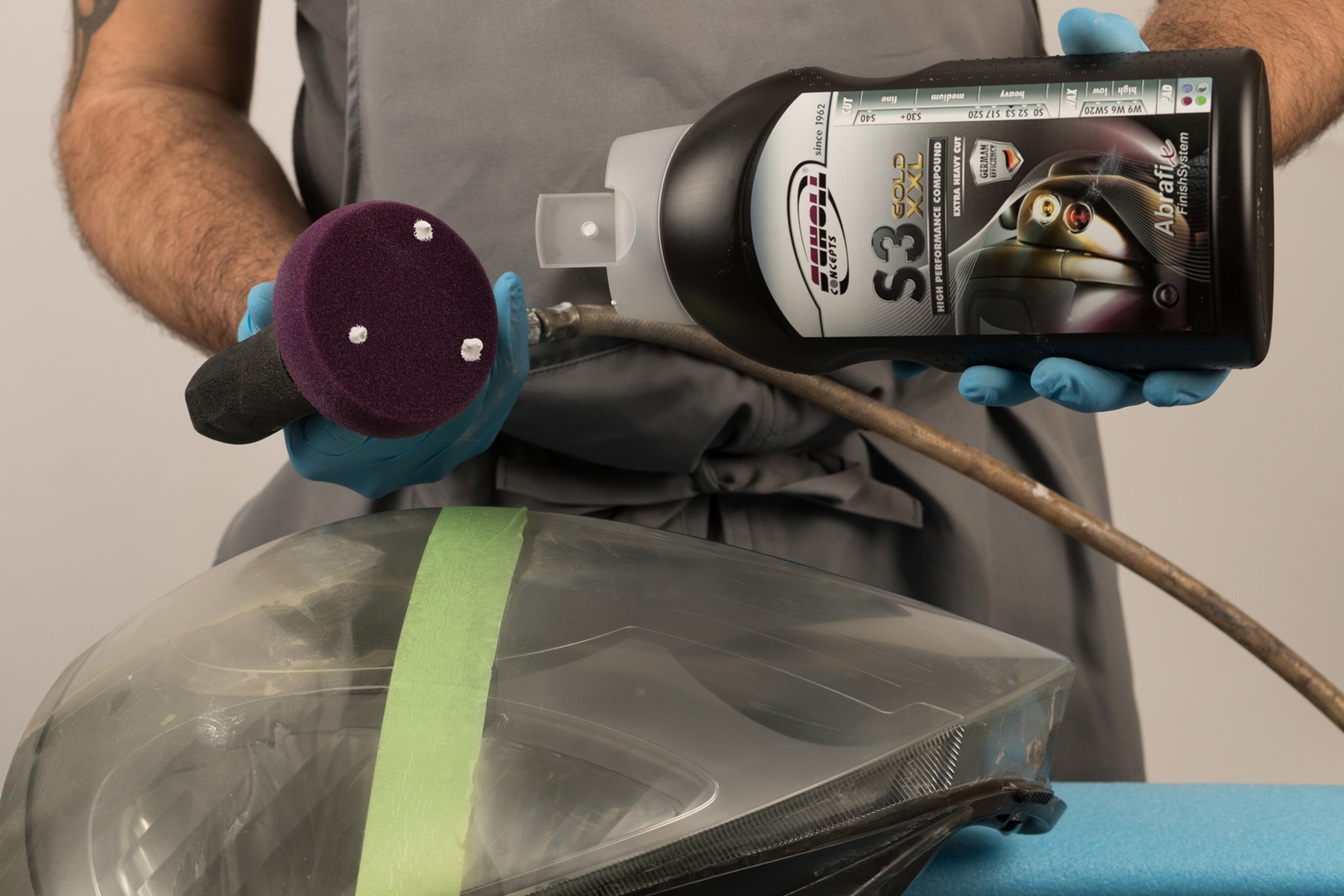Headlight restoration
Headlights are often referred to as the ‘eyes’ of a cars ‘face’ – they can define the look of a car, as well perform an essential function. Most modern cars have plastic headlights made from polycarbonate as they are more resistant to cracking than glass lenses. However, they are susceptible to fading and misting – this detracts from their appearance as well as their performance – in extreme cases this can lead to an MOT fail.
The damage is caused by a mixture of abrasion and UV light, the latter of which oxidises the surface. The good news is that this can normally be repaired using wet-sanding followed by machine polishing. There are various products on the market tailored for the home user, but these can have limited results and the lights often return to their previous state quickly.
In contrast, detailers can perform a proper repair which will last just as long as the lights did when they emerged from the factory. One important thing to consider is protection – from the factory the lights are covered in a lacquer which, once decayed or removed from the repair process, needs to be replaced with a suitable sealant – primarily to protect from future UV damage. There are a limited number of products on the market that are tailored specifically to headlights, though there are plenty of ceramic paint sealants that will offer decent protection.
In issue 1 of the Pro Detailer magazine we go through the basics, and in issue 4 there is a big article with a step by step guide – both worth a read if you are planning on attempting the process yourself.
The images above are before and after photos by Mike Ashby of Happy Headlights - these lights are off a Porsche 911 (996) and the benefits are clear to see



